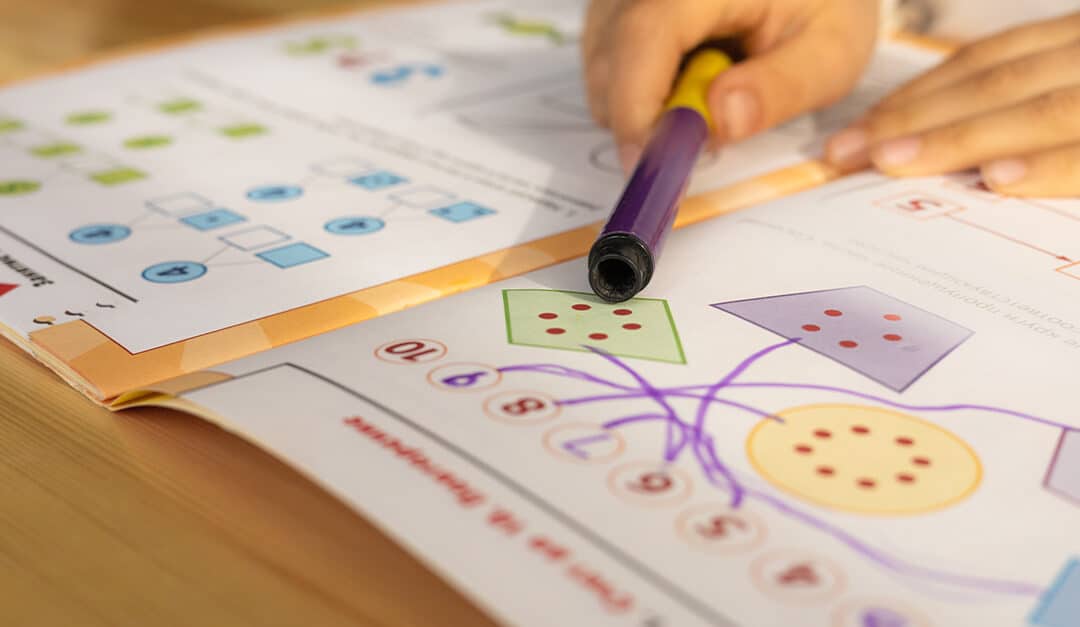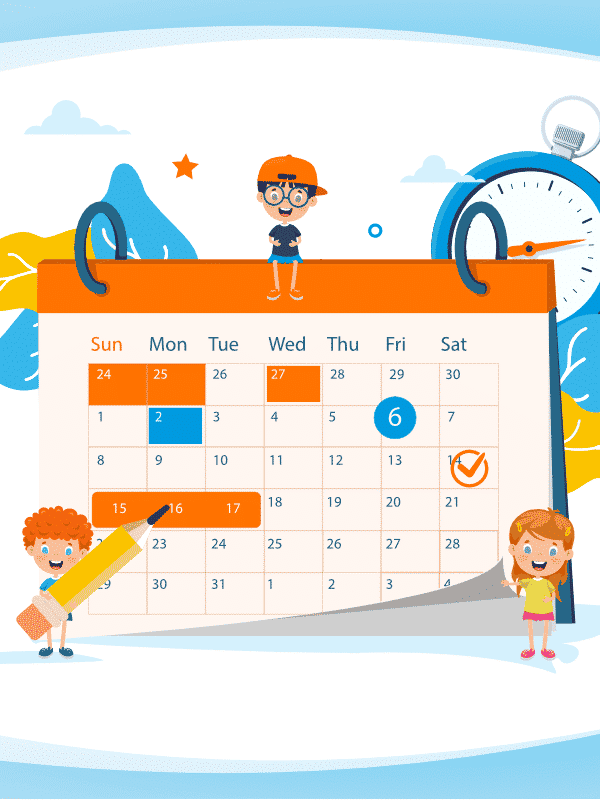Math is one of the main academic subjects at school; it’s there at every grade level! Love it or hate it, you can’t deny it’s very important. Math will be with your kids at every stage of their lives, to more or less extent. There’s no surprise, it’s equally important in Spanish speaking countries and cultures, right?
So, it’s super important that if your children are learning Spanish as a second language, they also learn math in Spanish. We know that for some kids, mathematics can be hard or boring, so it won’t be easy to make them study it in another language.
That’s why we gathered some tips to help your kids learn math in Spanish. Hopefully, these will also help you have an easier time convincing them to practice.
Start with the Basics
Learning a second language can already be tricky, now imagine learning another academic subject in that second language. Especially one that tends to be difficult for many, like math.
You have to take it easy, go step by step, and start with the basics. Even if your kids already know the basics of math, like how to count, how to add and subtract. Maybe they’re a bit far beyond that, because they already learned that in their mother tongue when they were even younger.
But now they have to learn all that in a new language as well. So you can’t teach them the more advanced math operations if they don’t know the important and basic math vocabulary, like “sumar”, “multiplicar”, “números”…
Not all is bad though! This time, doing the exercises might not be as hard as the first time, because they already know the process. Now it’s more about learning the words in Spanish.
Teach Math Through Music
Kids learn a lot of things through music and rhythm. That’s because they love music; it’s fun! But the catchy melodies also make it easy for their brains to repeat it; it’s like the music and lyrics stick to their brains.
Think of the melody they learned the alphabet with… Well, just like that, there are also some songs and melodies to learn math. There are many songs about numbers in Spanish. Which is great, because learning the numbers is one of the most important things, if not the most important, to do math.
But that’s not it. You can also look for songs about math in general, like to learn the multiplication tables or units, tens, and hundreds, or math vocabulary. We recommend the YouTube channel “Math Songs by NUMBEROCK”. They have different songs and videos for children about math.
YouTube
This is close to the tip above. If your kids love watching YouTube videos, why not turn that into an educational activity? It doesn’t mean it has to be boring; it can be fun!
Just like you can look for songs for children on YouTube, you can also look for YouTube videos that teach children math. Not just the name of the numbers or some math words in Spanish, but how to actually do some math.
But make sure it’s not a boring video of a person teaching in a tiring way. They might get bored easily. Or if that’s how their math classes are at school, they’ll feel like they’re back in the classroom, sitting down trying to catch some knowledge. They have to be fun videos. Some of these types of educational videos for kids have one or more of these things:
- Colors
- Cute cartoons
- Tons of examples
- Slow and easy explanations
- A person/teacher with a good attitude and energy
- Music
Put the Math Vocabulary into Practice
Now it’s time you put into practice all the math words and phrases in Spanish you taught your kids. First you can start by pronouncing the vocabulary and using it in basic sentences.
For example: “Me gustan mucho las matemáticas” (I like math very much). Or “las divisiones y las fracciones son muy difíciles” (divisions and fractions are very difficult).
Then, you can teach them how to do some operations. But you have to speak Spanish, so they learn more and they start getting immersed in the language. For example, explain to them in Spanish how to subtract, even if they already know how to do that.
But the best practice will come from actually doing math operations in Spanish! You can create or print some operations for them to solve. Make sure the instructions are in Spanish. Then, as they start working on each operation, ask them to tell you about their process in Spanish.
For example: “Ahora voy a sumar el número cinco…” (Now I’m going to add the number five…)
Solve Math Problems
You could say this is similar to the tip above, because you’ll be putting your math vocabulary into practice by doing… Math! But this time it’s not just simple operations saying some sentences out loud. No, now your kids must solve math problems in Spanish!
We’re talking about those types of problems where there’s a description of a situation and a mathematical question. So kids have to solve the problem and answer the question. Like, “Miguel bought 1 apple and 1 pear, how many fruits does Miguel have?”. The longer the description of the problem, the better for your kids’ Spanish.
This will be harder for their math skills in Spanish than solving simple operations. Because the narration of the problem will make it trickier, especially since it’s in Spanish. They might not know all the words used. But it will also give them more room for improvement and for polishing their language. Their vocabulary will expand!
Add Math to Your Daily Routine
This is perfect for your children to implement their Spanish math vocabulary and learn to do math operations in Spanish in real life situations. Even better, it’s perfect for your kids to learn the importance of math for everyday life!
Many kids are curious about what certain academic subjects work for, and they often ask this question to their parents or teachers. They’re probably curious about why they have to learn certain things. Will they actually use them someday? What better way to answer that question than by showing them how math in Spanish works in real life.
Just add math in Spanish into any daily activities that you do with your kids. Here are some examples:
- You can cook a delicious dessert with them and add some mathematics into the process. Remember to always speak Spanish.
- When you go to the mall together, you could add some addition and subtract exercises in Spanish. For example: Grab two things that they’re asking you to buy for them and ask them in Spanish how much it is between both of those things. The answer doesn’t count if they don’t answer in their target language.
- Give them a small amount of money every month for them to save or spend on whatever they want. Go shopping with them but they must do the proper operations in Spanish, of course.
Get Them a Fun and Engaging Spanish Tutor
If you want your kids to keep learning Spanish, remember: Kids learn better when they’re having fun! So, the best you can do is get your children a Spanish tutor that will keep them entertained and enjoying the classes!
Math isn’t the only thing that can get hard or, worse, boring. Learning a new language can be tedious for kids as well if they’re not enjoying it. Don’t worry, though. Here at TruFluency Kids we have native teachers that understand kids and will do everything to make the process of learning Spanish fun!
With us, students do all kinds of common but fun Spanish activities, like:
- Singing
- Reading
- Dancing
- Doing arts & crafts
- Cooking
We teach all areas of the language, from grammar to vocabulary to listening.
Oh, and with the Bellieu Method in which we base our classes, we focus even more on speaking. So, they’ll be able to put their math vocabulary into practice! This method was created by our founder and language expert, Micah Bellieu! And it consists of encouraging kids to speak in Spanish in EVERY SINGLE CLASS! How cool is that!
So, your kids will achieve Spanish fluency with us! But wait! We also think about our busy parents. That’s why our classes are completely online and with flexible schedules. So your kids can study with us from anywhere in the world and at the time that better fits your agenda!
Enroll them in our next four-week session now and add some Spanish fun into their daily routine!


